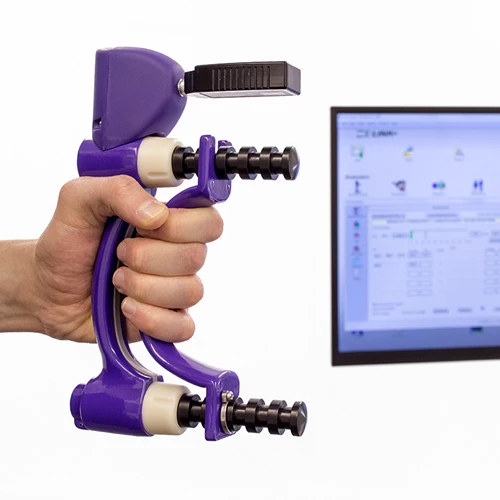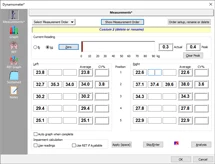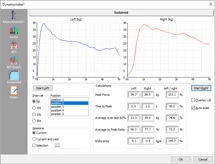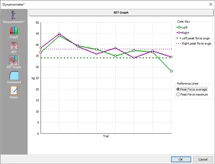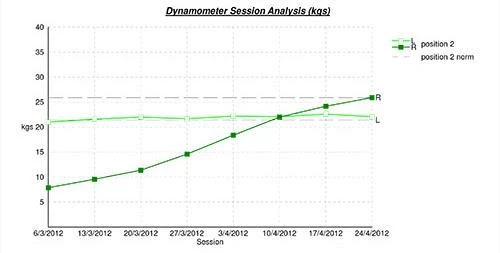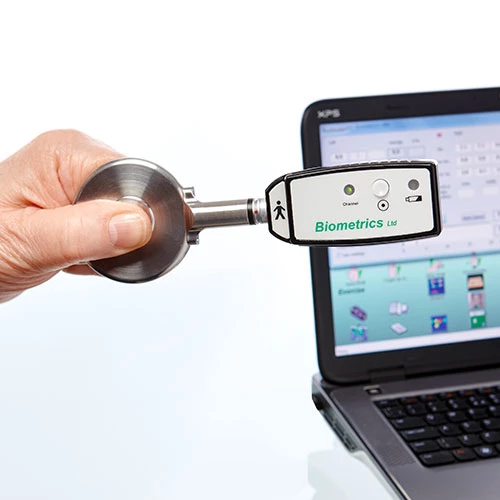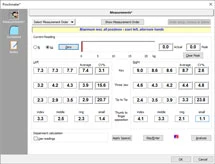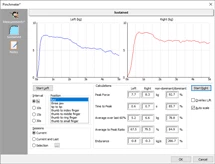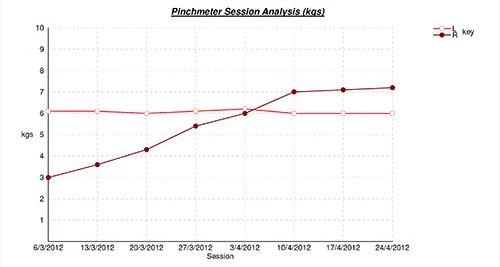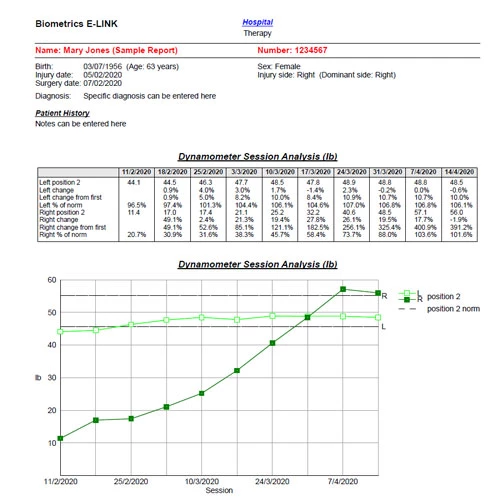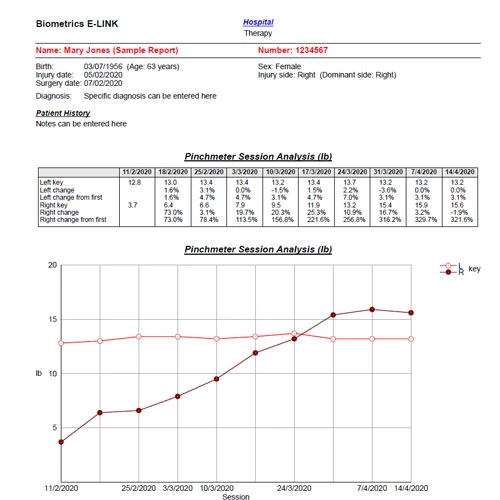Hand Grip Dynamometer & Pinch Meter
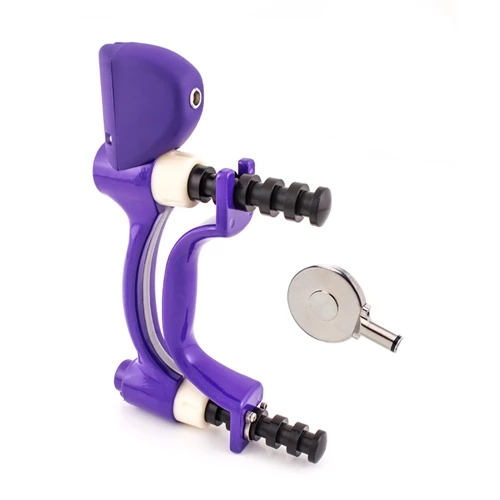
The E-LINK Hand Kit, comprised of a Hand Grip Dynamometer & Pinch Meter, is a valuable tool for boosting the precision of your clinical evaluation and exercise sessions. It not only facilitates interactive activities after assessment, but it also allows for the tracking of grip and pinch strength in comprehensive progress reports.
Grip Strength Measurements
The Hand Grip Dynamometer easily and accurately measures a patient's grip strength from 0.1kg/lb measurement through to a maximum of 90kg (200lbs), covering those with chronic debilitating conditions, such as rheumatoid arthritis, as well as those with acute hand injuries.
Paired with the E-LINK software, the hand grip dynamometer allows you to quickly and accurately conduct a range of tests. These include a Standard Peak Force Grip Test, Sustained Grip Test, and Rapid Exchange Grip Test, all of which cannot be undertaken with a manual device:
Standard Peak Force Grip Test (1/4)
Three measurements can be quickly entered for each hand position as required. The software automatically calculates the average grip and the coefficient of variation percentage as an indication of the measurement consistency. A force distribution graph is displayed for the five positions.
Sustained Grip Test (2/4)
This test measures force over time for a 5, 10, 15 or 30 sec interval. Peak force, time to reach peak force, average to peak ratio percentage (sustainability) and fatigue rate are automatically calculated and immediately displayed. The current graph can be compared with a prior test to analyze progress.
Rapid Exchange Grip Test (3/4)
Undertaken for the detection of sub-maximal effort, this test is easily performed and documents the grip force applied for eight tests of each hand with a 1, 1.5 or 2 sec interval set timing. The results are displayed in both graph and table form for immediate analysis.
Progress Reports (4/4)
Progress Reports can be readily generated covering a maximum of 10 tests and the data is displayed in both graph and table format. Automatic calculations show the percentage of change from one session to another, the percentage of change from the first test and the percentage comparison to standard, normative Jamar data for both pediatric and adult values. Ideal as an Outcome Measure and for a Discharge Summary.
Pinch Strength Measurements
The Pinch Meter can measure pinch strength from 0.1kg/lb up to 22kg (50lbs). Its unique, low-profile design allows for measurements closer to the end range than other devices, delivering greater precision and in your strength evaluations.
Paired with the E-LINK software, you can quickly and accurately conduct a range of pinch tests. These include a Standard Peak Force Pinch Test, and a Sustained Pinch Test, both of which cannot be undertaken with a manual device:
Standard Peak Force Pinch Test (1/3)
This test can be taken for the key (lateral), three jaw (tri-pod) and tip to tip positions. Three trials per position can be recorded and the software automatically calculates the average Pinch measurement and the co-efficient of variation percentage as an indication of the measurement consistency. Single measurements of Thumb to Digit Opposition can also be entered for each digit.
Sustained Pinch Test (2/3)
This test measures force over time for a 5, 10, 15 or 30 sec interval. Peak force, time to reach peak force, average to peak ratio percentage (sustainability) and fatigue rate are automatically calculated and immediately displayed. The current graph can be compared with a prior test to analyze progress.
Progress Reports (3/3)
Progress Reports can be easily generated covering a maximum of 10 tests and the data is displayed in both graph and table format. Automatic calculations show the percentage of change from one session to another and the percentage of change from the first test. These Reports are ideal as an immediate clinical Outcome Measure and for Discharge Summaries.
Achieve Patient Goals with Detailed Progress Reports
Progress Reports can be readily generated covering a maximum of 10 tests and the data is displayed in both graph and table format. Automatic calculations show the percentage of change from one session to another, the percentage of change from the first test and the percentage comparison to standard. Ideal as an Outcome Measure and for a Discharge Summary.
Advanced Hand Therapy
Interactive Grip & Pinch Activities
The E-LINK Activities are controlled by the application and relaxation of isometric grip or pinch within set parameters. These interactive activities can aid in motor learning, control, and isometric strengthening, contributing to an engaging and effective recovery or exercise process.
As opposed to traditional zero to peak force exercises, the range of force may be graded, setting the minimum and maximum, to meet the patient's functional goals. Force ranges for exercise are set in 0.1 increments with a maximum load of 90 Kg (200 lbs) for grip and 22 Kg (50 lbs) for pinch.
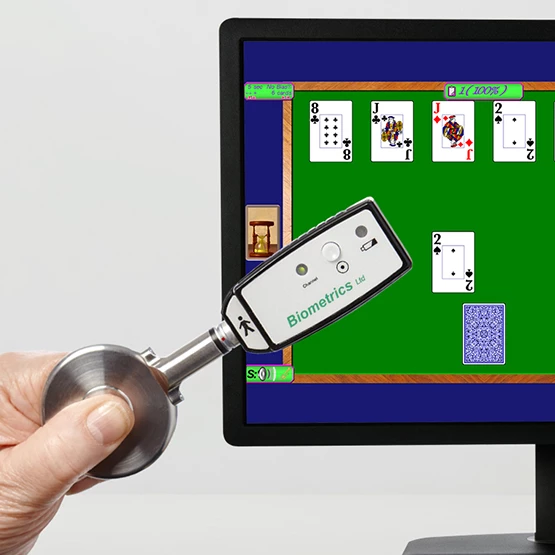
Frequently Asked Questions
Includes:
The Hand Kit comes with all necessary components and software, ensuring you have everything you need to conduct effective grip and pinch strength assessments.
Requirements:
The Hand Kit offers both wired and wireless connection options, fitting into your workspace setup and providing flexibility for different clinical environments.
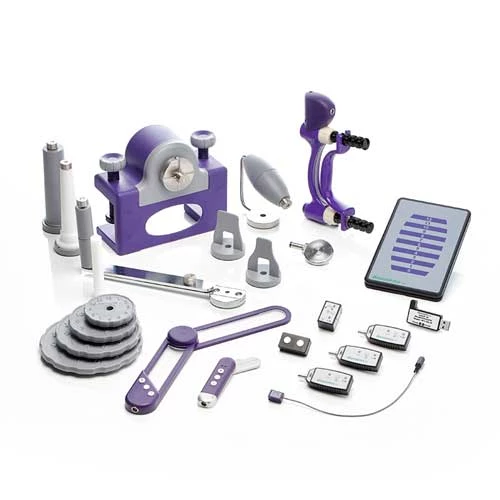
Upper Extremity Systems
E-LINK systems package together popular accessories tailored to meet a wide range of clinical applications.
Hand Kit Citations
Here are a few of our favourite studies using the E-LINK Hand Kit
Development of Grip Strength During The First Time Year After Stroke
Stock R, Thrane G, Askim T, Anke A, Mork PJ.
J Rehabil Med. 2019 Apr 1;51(4):248-256. doi: 10.2340/16501977-2530. PMID: 30848829.
Relationship Between Grip and Pinch Strength and Activities of Daily Living in Stroke Patients
Bae JH, Kang SH, Seo KM, Kim DK, Shin HI, Shin HE.
Reliability and Validity of an Electronic Dynamometer for Measuring Grip Strength
Allen, Deborah & Barnett, Fiona. (2011).
International Journal of Therapy and Rehabilitation. 18. 258-264. 10.12968/ijtr.2011.18.5.258.
Quote Request
Experience the Unique Electronic Grip & Pinch Dynamometers Today!



